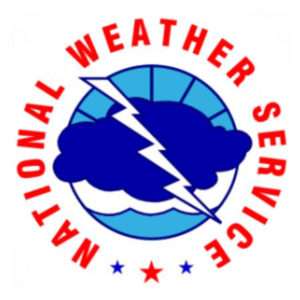
JUDD WEIL
Hutch Post
HARVEY COUNTY, Kan. — The National Weather Service (NWS) held their annual Storm Fury on the Plains presentation at Newton High School in Harvey County on March 9.
The presentation offered information that will help prepare storm spotters and weather enthusiasts for the upcoming storm season by teaching Harvey County residents about the different types of storms, the features that help a storm spotter to recognize the potential severity of a storm, how to report a storm to the National Weather Service office in Wichita and general severe weather safety tips.
Andy Kleinsasser, an NWS Meteorologist, presided over the presentation.
"Kansas is in the bullseye of severe weather, " Kleinsasser said.
The state ranks number one in total number of severe weather reports per year per square mile, and has since 1990.
“Severe weather density and severe weather frequency, we see the most of it so we have to be more ready than most, we have to be more weather savvy than most,” Kleinsasser said.
Kleinsasser said the busiest part of the year for severe weather tends to run through March, April, May, and June, and then drop off in August.
There are four types of thunderstorms.
He briefly went over the first and least severe, the single cell storm.
“Overall, this is a fairly low threat type of thunderstorm,” Kleinsasser said. “Usually fairly disorganized, these are the kind of thunderstorms if you've ever visited or lived down in the southeastern part of the U.S., it’s hot and humid in the summer. Every afternoon you get these ‘popcorn storms’ popping up in the heat of the day and after about 30 to 45 minutes maybe an hour at the most, they come back down.”
Single cell storms usually produce extremely heavy rain because they are slow moving and disorganized. They are capable of producing small hail and when they collapse, locally strong downburst winds.
The biggest threat of single cell storms is locally heavy rain.
The second least severe storms are multicluster storms.
Kleinsasser did not spend much time on these storms, with their biggest threat being fairly heavy rain and flooding.
Kleinsasser moved into squall line storms next. The other most severe thunderstorms are squall lines. Squall lines take on the appearance of long, sweeping walls of clouds.
“They stretch from horizon to horizon,” Kleinsasser said. “I’ve seen them stretch from Minnesota all the way down to Texas.”
Squall lines present their main threat with strong straight-line damaging winds, especially when they start bowing out, which is called a bow echo.
Squall lines can produce small hail, and can produce isolated tornadoes.
Research on squall line tornadoes in the last several years show they usually not occur unless it's a very strong bow echo right along the leading edge.
The final storm type Kleinsasser talked about were supercell storms, the these can generally produce the most severe thunderstorms.
A supercell is capable of producing a tornado, but most do not. Kleinsasser likened their appearance to an “alien mothership.”
“This is kind of the mother of all thunderstorms,” Kleinsasser said. “What makes this storm so special, is the updraft that feeds that storms rotation.”
Kleinsasser said supercells are capable of causing all kinds of high-end extreme weather.
“If you’re going to get a Greensburg kind of tornado or a Joplin kind of tornado or a Andover kind of tornado, it’s going to come from a supercell.”
Storm spotters are advised to watch wall clouds when it comes to supercells. Wall clouds tend to take the form of an anvil or a head of cauliflower. Wall clouds should be watched for rotation, which can mean a tornado may form.
It can be hard to spot a possible tornado when trying to pick one up by watching a storm on radar.
However, in supercells at times, the highlight of the storm will form a “hook echo.” A hook echo is a hook-shaped rotation on a supercell radar image, signifying a chance a tornado could form.
The hook echo can also look like a letter “v.”
Kleinsasser said the National Weather Service is always ready for reports on variety and sizes of hail, winds upwards of 50 miles per hour, wind damage, flooding, and cloud rotation.
Storm spotters can report severe weather by tagging the National Weather Service in photos or videos on social media. The NWS can also be reached at their 24-hour line, (800) 367-5736.
There are many ways to spot severe weather, but it can still be dangerous to do.
Inexperienced spotters are advised not to go out storm chasing, but to report what they see from a safe area, such as their home.
Staying out of a storm’s way, and reducing the risk of harm by not chasing a storm, but rather recording observations from a safe distance, is a generally good idea.
Should things get “choppy” and start to look bad, having a planned escape route, for those who choose to follow storms in their vehicle, is also advised.
When spotting, one should make sure they can see the storm unobscured.
Spotters can also reach out online at insw.ncep.noaa.gov/report or spotternetwork.org or by using the MPing mobile app.
CLICK HERE to download the Hutch Post mobile app.
CLICK HERE to sign up for the daily Hutch Post email news update.





